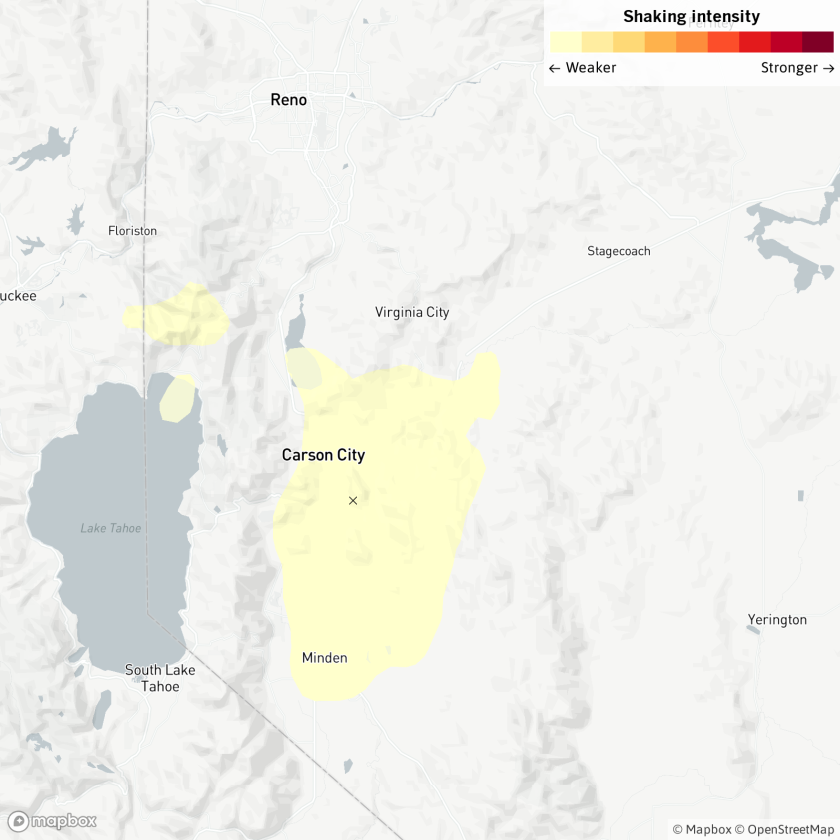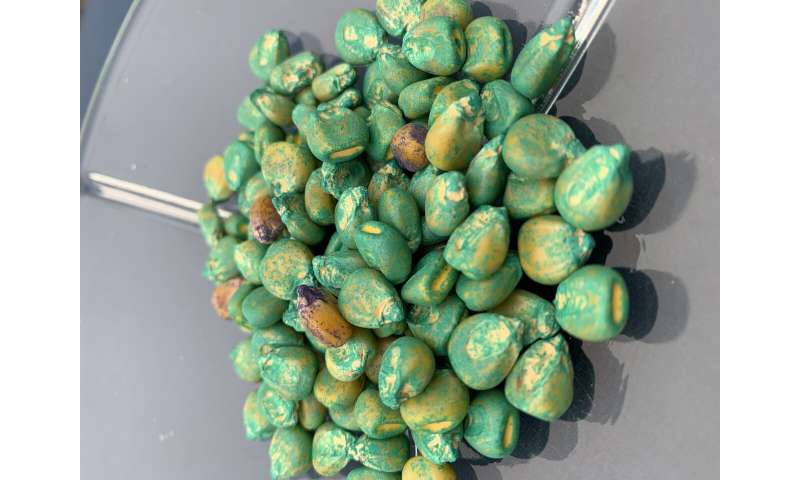
An Olympic Showdown: The Rising Clamor to Postpone the Tokyo Summer Games
Andrew Keh, Matt Futterman, Tariq Panja and Motoko Rich
3/21/2020
On July 24, as far as the organizers of the Olympics are still concerned, thousands of athletes will march as scheduled into the national stadium in Tokyo for the opening ceremony of the biggest sporting event on the planet. The Summer Olympics.

© Jae C. Hong/Associated Press Tokyo has been preparing for the Summer Olympics since winning the bid in 2013.
Is this a vision of reality or just a mirage?
While the international sports calendar has been wiped almost clean by the spread of the coronavirus, the organizers of the 2020 Olympics — seemingly unwilling to meddle just yet with years of planning and billions of dollars in television rights and other anticipated revenue — insist the Games can go on.
Yet now, in a showdown over public safety, the organizers are facing a remarkable groundswell of criticism and pushback from their own athletes, fans and national Olympic officials, who are increasingly and unusually vocal in calling for a postponement
One of the biggest cracks in the usual solidarity behind the Games came Friday when U.S.A. Swimming, which governs the sport in the United States and regularly produces stars at the Games like Katie Ledecky and Simone Manuel, called for a postponement because of the growing obstacles to training amid practical restrictions imposed by the virus. The following day, U.S.A. Track & Field, which along with swimming has produced the most medals for the United States, also requested a delay.

© Aris Messinis/Agence France-Presse — Getty Images The traditional torch-lighting ceremony went off as planned on March 12 in Olympia, Greece.
Norway’s national Olympic committee, in a statement on Friday, became the first to clearly state a preference for the Olympics to be delayed until the global pandemic can be brought under control. The Brazilian Olympic committee on Saturday also endorsed postponing the Games until 2021.
There were signs of pressure within Japan, with a member of its Olympic committee coming out in favor of postponing the Games.
“Opening the Olympics at a time when athletes could not train as much as they wanted to runs counter to the motto of ‘athletes first,’” Kaori Yamaguchi, a member of the Japanese Olympic committee board who won a bronze medal in judo in the 1988 Seoul Olympics, said in an interview with The Asahi Shimbun. “The Games should be postponed.”
Hayley Wickenheiser, a six-time Canadian Olympian and a member of the I.O.C. Athletes’ Commission, has denounced the plan to go forward. “I think the IOC insisting this will move ahead with such conviction is insensitive and irresponsible given the state of humanity,” she wrote Tuesday on Twitter.
Thomas Bach, the president of the International Olympic Committee, said in an interview Thursday that the Games would not be canceled. And while he left open the possibility of postponing them, he said a decision did not have to be made soon.
© Jean-Christophe Bott/EPA, via Shutterstock Thomas Bach, the president of the I.O.C., has told athletes to proceed “full steam ahead” with their training.
“Nobody today can tell you what the developments are tomorrow, what they are in one month, not to mention in more than four months,” Bach said, justifying the wait-and-see approach.
But in reality the organizers may not have that much time, and in many ways, outside forces could be making the decision for Bach.
Japan has travel bans and strict quarantining measures imposed on visitors from scores of countries, and a recent national poll showed that a large majority of people there did not believe the Games could proceed as planned.
Broadcasters and marketers are fretting about a sports calendar already upended by cancellations and postponements involving nearly every other league and major event in the world — which, among other challenges, would make it difficult for marquee athletes like N.B.A. superstars to come to Tokyo. Even NBC, the American broadcaster that has great sway with the organizers, has prepared for the possibility that the Games will be shifted to next year or farther down the road. 
© Carl Court/Getty Images Olympic banners already hang on Tokyo streets.
And then there is the negotiating partner that cannot be reasoned with: the Covid-19 virus itself, which has torn an uncontrollable, unpredictable path across the global map, yielding a cascade of consequences that have altered the fabric of daily life.
© Wang Zhao/Agence France-Presse — Getty Images Brian Roberts, the chief executive of Comcast, which owns NBC, said the network had insurance to protect it from losses in the event of a postponement.
The modern Olympics are a multibillion-dollar, made-for-television extravaganza that serve as an investment vehicle for scores of sponsors and media partners and as a source of entertainment for millions of fans.

© Agence France-Presse, via Jiji Press/Afp Via Getty Images Prime Minister Shinzo Abe of Japan recently seemed to signal an understanding that the Tokyo Games may have to be delayed.
But the heart of the Games remains the athletes, and so it was no surprise that the calls for postponement only seemed to gain traction in recent days, as their cries and concerns grew louder and more explicit.
The outcry arrived almost simultaneously with a rash of restrictions on movement and public gatherings and a sharp rise this week in coronavirus cases in Europe and North America — all of it clashing with Mr. Bach’s advice that athletes should train “full steam ahead,” as if the Games would still occur in late July and early August.
© Athit Perawongmetha/Reuters In a recent poll by a Japanese news service, about 70 percent of respondents said they did not expect the Tokyo Games to go on as planned.
Many found the I.O.C.’s stance tone deaf. Not only have athletes in affected countries struggled to maintain their elite-level training routines, but stubbornly trying to do so might exacerbate the spread of the virus.
“I recognize they’re treading a light line: They’re conscious of the brands, they’re conscious of the impact on the Japanese economy, and they’re in a precarious position,” Iñaki Gómez, a member of the Canadian Olympic Athletes’ Commission, said of the I.O.C. “But for me, I think that all has to go out the window. We’re trying to contain something that’s unprecedented in the last 100 years.”
Some American gymnasts, who tend to be a centerpiece of the Games, are also openly calling for a postponement.
“For all of those athletes in the U.S., but also globally, like in Italy and in China, who are on complete lockdowns, I think it would make it a fairer competition in Tokyo if the Olympics were postponed to give everyone the time they need to be ready,” said Laurie Hernandez, a 2016 gold medal winner who has been scrambling to find a place to train since her gym in California closed its doors on Thursday night because of the state’s shelter-in-place order.
The president of U.S.A. Gymnastics, Li Li Leung, said Friday that the organization would survey its athletes before deciding whether to take a position on postponing the Games.
The United States Olympic and Paralympic Committee, however, said it would continue to endorse the I.O.C.’s wait-and-see approach. That decision provoked the ire of athletes, and hours later U.S.A. Swimming added its voice to those calling for postponing the Games.
“Pressing forward amidst the global health crisis this summer is not the answer,” Tim Hinchey, the chief executive of U.S.A. Swimming, wrote in a letter to the U.S.O.P.C.
Mr. Bach had acknowledged the day before that in some corners of the I.O.C.’s headquarters in Lausanne, Switzerland, alternative plans were being weighed.
Given that canceling the Games entirely was ruled out this week by the I.O.C., many analysts now believe that the most logical decision would be to wait a year, when it is hoped the world will have emerged from the worst of the pandemic.
That could disrupt other big events, including world championships for swimming and for track and field that are scheduled in 2021.
Whatever decision is made, Mr. Bach has repeatedly insisted that it would not be driven by financial interests. Still, I.O.C. executives have been in constant contact with leading sponsors and broadcast executives.
The I.O.C. derives roughly half of its revenues from its media partners, and about 75 percent of those come from NBC, which in 2014 agreed to pay $7.75 billion for all the U.S. media rights to the Olympics through 2032. (That is an average of $1.29 billion for each Games from 2022 to 2032, 17 percent more than the average fee of $1.1 billion the NBC committed for the 2014-2020 Games.)
Brian Roberts, the chief executive of Comcast, which owns NBC, said at a conference in San Francisco this month that the company had insurance to guarantee it would incur “no losses” should the Games be postponed this year.
At this point, in fact, pushing ahead with the Olympics this summer could cause scheduling conflicts for NBC.
The network televises the N.H.L. and England’s Premier League, both of which are on hiatus but intend to finish their seasons. Their rescheduled games may ultimately conflict with the Olympics, which NBC shows on several channels through its parent company, NBCUniversal.
In a statement, NBC promised to “continue to do the best we can to be prepared to stand behind any decision made by the I.O.C., the Japanese government and the world health officials with whom they are working regarding the 2020 Olympics.”
Every media agreement is different, but Neal Pilson, the former president of CBS Sports and a former media consultant to the I.O.C., said many deals are set up so that the broadcaster partners do not have to pay the bulk of the fees for each Olympics until just before the Games actually begin. That means the I.O.C. would have to wait for its money in the event of a postponement.
Pilson said the idea of staging the Olympics with just athletes and no spectators — effectively making it a global television event — would not solve the central problem of how many people are required simply to run the Games. NBC alone is expected to take roughly 2,000 people to Japan. In addition, the Olympics typically require more than 50,000 workers, support staff and volunteers.
“Delaying to October doesn’t really work, because you don’t really know how much better things will be then,” Mr. Pilson said. “That brings you back to the idea that postponing for a year is probably the best solution.”
Michael Lynch, the former director of global sponsorship marketing for Visa who now consults with Olympic sponsors, said the uncertainty surrounding the Games had put companies that spent $100 million or more to partner with the I.O.C. in a bind at a difficult moment for all businesses. All have advertising, promotions, retail engagements, hospitality and other events planned for Tokyo during the Games. All typically spend one to three dollars supporting those efforts for every dollar they devoted to buying Olympic sponsorship rights.
“How do you invite people to the Games at this time?” Mr. Lynch said.
While Mr. Bach said the I.O.C. had no cash-flow issues, there are other entities that rely on payments from the Olympics to finance their operations, including the United States Olympic and Paralympic Committee. The U.S.O.P.C. has a revenue-sharing arrangement with the I.O.C. that gives it about 12 percent of the fees from NBC and roughly 20 percent of the I.O.C.’s sponsorship revenue.
The broadcast payments alone, which totaled $169 million from the Summer Games in 2016 and $121 million from the Winter Games in 2018, account for about half of the U.S.O.P.C.’s revenues. Because the payment is not made until after the Games have occurred, a delay could cause a serious financial shortfall for the organization.
Even if the I.O.C. does decide that the Olympics should be postponed, it must find some harmony with the wants and needs of the host nation.
It was four years ago, at the closing ceremony of the 2016 Games in Rio de Janeiro, that Japan assumed control of the Summer Olympics spotlight. That night, Shinzo Abe, the prime minister of Japan, emerged from a green drainpipe dressed as Super Mario, the popular video game character. For the normally staid politician, the appearance signaled in colorful terms the depth of his commitment to what could be the defining project of his legacy.
Since being awarded the Games in 2013, Japan has invested tens of billions of dollars as the partner of the I.O.C. Navigating the current crisis, then, has become a test of pride for the country’s government and its Olympic committee officials, and in the current predicament over possible postponement, they hold many of the cards.
Until recently, their public statements reflected a show-must-go-on mentality, but within the last two weeks, cracks have started to appear.
On March 10, Haruyuki Takahashi, a member of the local organizing committee, suggested that a delay of one or two years would be the most prudent option if the Olympics could not be held as planned. Though he was forced to apologize, a shift seemed to have begun.
Mr. Abe, in a video conference call Monday with the leaders of the Group of 7 countries, said, “I want to hold the Olympics and Paralympics perfectly, as proof that the human race will conquer the new coronavirus, and I gained support for that from the G-7 leaders.”
The fact the prime minister did not specifically mention holding the Games in 2020 signaled to some that he was starting to accept the idea of a delay.
Speaking in Parliament two days later, Mr. Abe’s deputy, Taro Aso, who is also the finance minister, referred to prior Olympics that were disrupted by world events, including the 1940 Games, which were canceled because of World War II, and the 1980 Moscow Olympics, boycotted by 65 nations including the United States and Japan.
“This time, it doesn’t make sense if others cannot attend from other countries, even if Japan alone will become all right,” Mr. Aso said.
“As the prime minister said, it’s desirable to hold the Olympics in an environment where everyone feels safe and happy,” Mr. Aso added. “But that’s not something Japan alone can decide.”
Close watchers of the government said that a decision most likely had not yet been made, but that Mr. Abe was signaling a willingness to consider options.
His recent comment to the Group of 7 “is a strategic ambiguity,” said Kunihiko Miyake, a former Japanese diplomat now teaching at Ritsumeikan University in Kyoto. “In these cases, what is not said is the most important.”
Even though the Olympic flame arrived in Japan from Greece on Friday, the Japanese public already seemed farther along in accepting a postponement than the government. In a poll released Monday by Kyodo News, a Japanese news service, close to 70 percent of respondents said they did not expect the Tokyo Games to go on as scheduled.
Amid all this, the hunger for the Olympics remains strong.
Mr. Abe and Mr. Bach have both alluded to the fact that the Games could have the power to bring people together and help the world heal after the horrors of the pandemic.
“Tokyo could end up staging the greatest Olympics ever,” Michael Payne, a longtime former marketing director at the I.O.C., said. “It would be the celebration of the world having come through this very difficult time.”
But the almost impossible task, now, is somehow ensuring that such a celebration would not be premature.
Juliet Macur, Makiko Inoue and Ben Dooley contributed reporting.
#NOOLYMPICS2020
#NO2020OLYMPICS
#NOTOKYOOLYMPICS2020
































